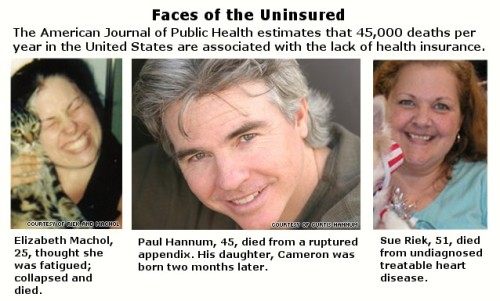Data released in July of 2009 reports that one-fifth of emergency department visits were made by people who were uninsured. In response to the statistic, Secretary of the Department of Health and Human Services, Kathleen Sebelius said, “Our health care system has forced too many uninsured, rural and low-income Americans to depend on the emergency room for the care they need. We cannot wait for reform that gives all Americans the high-quality, affordable care they need and helps prevent illnesses from turning into emergencies.” When an uninsured person begins to face symptoms of serious illness, such as heart disease or diabetes, they face a terrible choice: pay the money now and seek help immediately before symptoms get worse or wait until the situation becomes an emergency.
The Federal Emergency Medical Treatment and Labor Act (EMTALA) is a federal regulation that requires any hospital that receives taxpayer funding, in any form, to receive and treat any person who comes to the ER, regardless of their ability to pay. While this is a step in the right direction towards universal health care, it means that many people are stepping into the ER to seek treatment for minor problems, causing long waits, overcrowded hospitals, and overworked medical staff.
For more interesting facts about emergency room overcrowding, click here.















